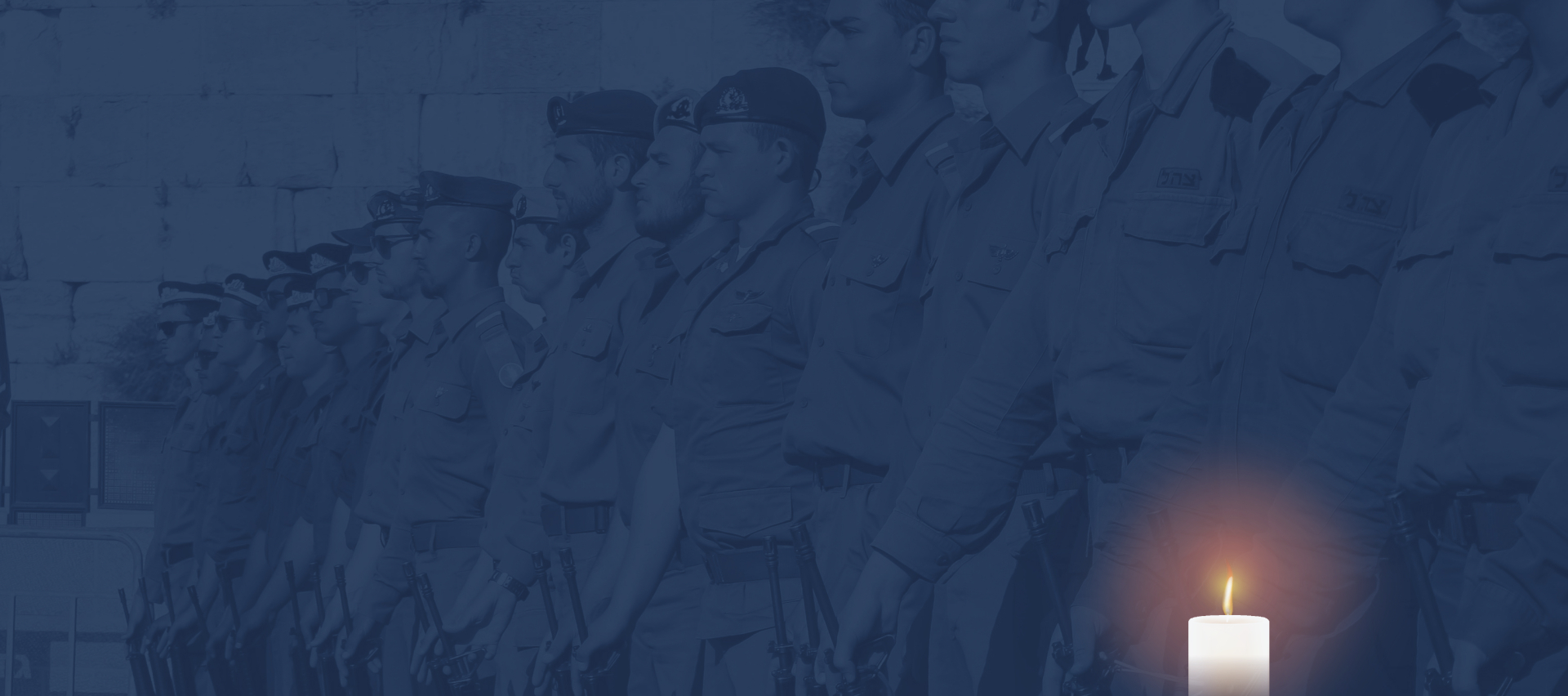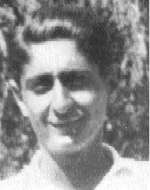,אֵ-ל מָלֵא רַחֲמִים, שׁוכֵן בַּמְּרומִים, הַמְצֵא מְנוּחָה נְכונָה
,עַל כַּנְפֵי הַשְּׁכִינָה בְּמַעֲלות קְדושִׁים, טְהורִים וְגִבּורִים
כְּזֹהַר הָרָקִיעַ מַזְהִירִים, לְנִשְׁמות חַיָּלֵי צְבָא הֲגָנָה לְיִשְׂרָאֵל



Ben-Nissim, Balfour
Son of Pnina and Gabriel. He was born on September 19, 1925 in Basra, Iraq. He immigrated to Israel when he was one year old. He grew up in the Kfar Ganim neighborhood of Petah Tikva. He was an alert boy, tall, dark and thin. He belonged to the Ha – Shomer ha – Tsa’ir youth movement and was among the members of the “Nir” battalion of the Petah Tikva branch. He was very active and prominent among the members, devoted and loyal to his movement. Between 1941-1940 he lived in Kibbutz Mishmar HaEmek and dreamed about kibbutz life in the future. Balfour joined the Haganah at the end of 1941 and swore allegiance to him at the swearing-in ceremony at the PIKA school in Petach Tikvah, and from then on he was allowed to carry a weapon and was very proud of it. Balfour fell in the course of his service on the seventh day of Passover, April 24, 1942, on the banks of the river Arugot in the area of Ein Gedi, when he left with his movement “Hashomer Hatzair” for the first trip of the movement to the Judean Desert, Was to last for six days, and about 150 members of the movement – boys aged 16-17 and their escorts – set out on April 5, 1942. Their journey began in the village of Bani Na’im, east of Hebron, Two days and a half later they reached the top of Masada, where they met on a trip of the Hanoar Haoved movement, which took a similar route, but in the opposite direction. During the days of the British Mandate in Palestine, the confiscation of weapons without permits was prohibited, and the security guards of the Hashomer Hatzair youth movement were scanty. Four of the escorts of the “HaNoar HaOved” trip – Palmach members armed with weapons and grenades – . When they left Masada, the travelers went to rest in the oases of Ein Gedi, the next destination being Kalia in the north of the Dead Sea. But the trip ended earlier than planned because of a disaster: the campers lit a bonfire to warm up a little before they set out for the road, set for two o’clock in the morning. One of the hand grenades fell into the fire and within seconds exploded. Avi Navon, a member of Kibbutz Lahav, who investigated the events, said: “… Suddenly, a huge explosion, a deafening noise, sparks flew in the air, the fire was scattered, many bent and bent instinctively for fear of being shot, waiting for another noise. Two, and it turned out that there was no continuation of the explosion, only one, but so terrible and strong, after the noise and a second of silence, the air filled with cries of pain. ” “I remember how I ran from one to another, I tried to distract them from the pain, to somehow pass the night through supplementary stories that were then accepted by Hashomer Hatzair.” As a result of the explosion, eight youths, including Balfour, were killed, and dozens were wounded. The two heads of the trip began to run toward Kalia, forty miles away, to call for help, and on their way they had to overcome robbers. The wounded and the other apprentices remained in the area for almost ten hours. When the sun rose, some of them ran to the nearby hills opposite the Dead Sea and signaled with sheets and blankets to boats from the potash factory that were sailing in the sea, but they did not notice them. It was not until around nine in the morning that barges arrived to rescue the wounded, when an improvised stretcher journey began from blankets, poles and acacia trees to the shore. The travelers were brought to Kalia, where ambulances, journalists, leaders of Hashomer Hatzair, public emissaries and worried parents were waiting for them. The victims were evacuated to Hadassah Hospital on Mount Scopus in Jerusalem. Balfour was sixteen when he died. He was laid to rest in the Segula cemetery in Petach Tikvah together with his friend Yehuda Pult. Hundreds of meWoe them on their last journey – workers, residents and youth. A few days later, their friend Mordechai Polchik, who was also injured in the incident, was buried alongside them and died of his wounds in the hospital. Toward the thirtieth day of the disaster, the Hashomer Hatzair leadership issued the booklet “Because we went to Massada” edited by Moshe Shamir, which was dedicated to the memory of those who perished. And Balfour said to him, “You have seen your student for many long hours, and you are wondering about its nature: light and shade are mixed up in it, and suddenly, in a moment of grace, it is revealed to you at the root of its soul, He did not always find a common language with his friends during the breaks, he was not always attentive and attentive to the teacher’s words during class hours, but occasionally he was surprised by a good deed that would reward him with an interesting and fascinating question in the literature and history classes. The words are still ringing in my ears: ‘Fathi, Masada, your gates, and Abu’ His face, his face pale and his eyes burning and trembling in his voice, we sensed at the time that we were faced with a soul that was undecided, demanding, it was not easy for the teacher to find the way to him, And he was devoted to this movement, and with the run of the seas he learned to control his spirit, he understood life in general, the life of human society was too complex and it was not to be overcome with emotion but by constant and calculated wrestling. , To look at his graceful face, his hot eyes, and to think: Here the boy has defeated himself, and he will triumph over Go Him. But fate is no different, bitter and cruel fate. “The image of Ein Gedi has stirred up the Jewish Yishuv in the early 1940s and aroused harsh criticism of the adventurism of the pioneering youth movements.” A year after the disaster, Ein Gedi set out on a journey A second of Hashomer Hatzair, whose pupils marched from Negba to Masada and Ein Gedi, and erected an improvised Gilad on the banks of Nahal Arugot, near Tel Goren, in the place of the children’s death – the name of the place by the nomadic Bedouins in the area. Of the Greek poet Simonides: “Passerby, Doom! Here Esther Esman, Zvi Reisenberg, Balfour Son of-Nissim, Yehuda Pult, Mordechai Polchik, Moshe Son of Ezra, Michael Fuchs and Uri Arab fell in the Aliyah Hashomer Hatzair movement to Masada, Passover 1942. They worked on Netivot, the journey never stopped. Every year, on Memorial Day for Israel’s Fallen Soldiers, a ceremony was held by the Petach Tikvah Municipality, in part for the fallen before the establishment of the state, opposite the graves of the three

